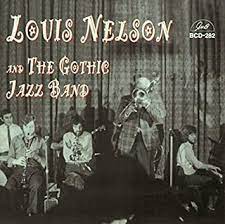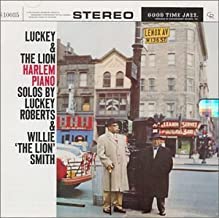
Daily Dose Of Jazz…
Louis Nelson was born September 17, 1902 in New Orleans, Louisiana. Both parents and his sister played the piano, his brother played the saxophone. In December 1902, his parents moved to Napoleonville, Louisiana because his father couldn’t get medical patients after the July 1900 Robert Charles Race Riots in New Orleans.
At the age of fifteen he started playing the valve trombone and switched to the slide trombone, studying under Professor Claiborne Williams. Graduating high school in 1919, Louis’ first band was Joe Gabriel’s band playing in dance halls for a dollar a night.
While in New Orleans in the 1920s, Nelson played jazz with Buddy Petit, Kid Rena, Kid Punch Miller, Sam Morgan, Chris Kelly, Papa Celestin, Willie Pajeaud, Kid Howard, Sidney Cates, and Kid Harris’ Dixieland Band. He would go on to join the Sidney Desvigne Orchestra. During the Depression, he joined the Works Progress Administration and became first chair in the WPA band, then volunteered for the U.S. Navy during WWII. Post Navy he played with Sidney Desvigne’s Orchestra, Kid Thomas Valentine, and Herbert Leary Orchestra. To make ends meet he took numerous day jobs from the post office to a janitor. In 1949, made his first recording with clarinetist and leader Big Eye Louis Nelson Delisle. This recording, by jazz historian Bill Russell of AM Records, marked the beginning of an extensive recording career for him.
Preservation Hall gave Louis permanent work, exposure to a new audience, and provided numerous opportunities for travel abroad as both a soloist and band member of the Billie and De De Piece and Kid Thomas Valentine’s bands.
He toured extensively from 1963, beginning with the George Lewis Band in Japan, Eastern and Western Europe, South America, Australia, Canada, and Mexico, as well as throughout the United States. Nelson appeared at every New Orleans Jazz and Heritage Festival, joined the Legends of Jazz and was featured in many New Orleans jazz documentaries.
Trombonist Louis Nelson, who in 1981 received a NEA grant and developed a program in which he played for New Orleans public school students and discussed New Orleans jazz history, passed away on April 5, 1990 of injuries suffered from a March 27 hit-and-run automobile accident. The driver was never caught.
More Posts: bandleader,history,instrumentl,jazz,music,trombone

Daily Dose Of Jazz…
Luckey Roberts was born Charles Luckyth Roberts on August 7, 1887 in Philadelphia, Pennsylvania, and was playing piano and acting professionally with traveling Negro minstrel shows in his childhood. Settling in New York City about 1910 he became one of the leading pianists in Harlem, and started publishing some of his original rags.
Roberts toured France and the UK with James Reese Europe during World War I, then returned to New York where he wrote music for various shows and recorded piano rolls. With James P. Johnson, he developed the stride piano style of playing about 1919.
His reach on the keyboard was unusually large and Luckey could reach a fourteenth, leading to a rumor that he had the webbing between his fingers surgically cut. Those who knew him and saw him play live denounced it as false, he simply had naturally large hands with a wide finger spread.
By the 1920s Roberts teamed up with lyricist Alex C. Rogers, co-wrote three Broadway musicals, Go-Go and Sharlee in 1923, and My Magnolia in 1926, the latter starred Adelaide Hall, a major black revue star.
Hisnoted compositions include Junk Man Rag, Moonlight Cocktail, Pork and Beans, and Railroad Blues. The Glenn Miller Orchestra recorded Moonlight Cocktail, and was the best selling record in the United States for ten weeks in 1942.An astute businessman, he became a millionaire twice through real estate dealings. Pianist and composer Luckey Roberts, who recorded piano solos with Willie “the Lion “ Smith, passed away on February 5, 1968 in New York City.



